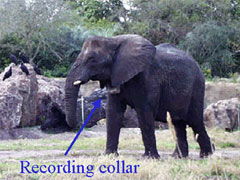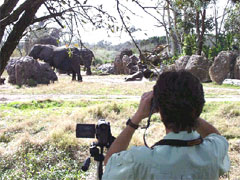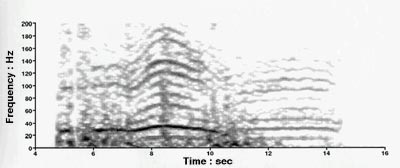Elephant Communication Research at Disney's Animal Kingdom
Each of us spends a lot of time communicating with others. Imagine what life would be like if we didn't have ways to share information with each other. Communication is an incredibly important part of the lives of animals, too!
At the Wildlife Tracking Center at Disney's Animal Kingdom, we have been studying elephant communication since the park opened in 1998. This research is part of an ongoing study to aid with developing long-term conservation plans for African elephants, both in the wild and in zoos.
The elephants at Disney's Animal Kingdom wear recording collars that allow us to
eavesdrop on them throughout the day.

We also videotape the elephants to match their actions with their vocalizations.

Researchers in the WTC then combine data from recording collars and video to look for relationships between vocalizations and other behaviors.
In addition to loud trumpeting, African elephants communicate using vocalizations that humans can't hear, called infrasound. These infrasonic vocalizations are more like the rumbles you might feel from distant thunder and, like thunder, can travel for distances of up to two miles.
But how do you study sounds you can't hear?

Tape recordings from the collars are later run through a computer that changes these sounds into pictures, or spectrograms, so you can visually see the sounds you can't hear.

The collars allow us to record much more precise information than if we were using hand-held microphones. With the aid of this technology, we have discovered two new types of vocalizations! Click here to learn about the different elephant calls we record.
It has always been assumed that because infrasonic elephant calls can travel long distances, they must be used for long-range communication. Although this may be the case for some of the vocalizations, we are actually recording many rumbles used over very short distances and in situations we never expected, like when the animals were swimming.
Although documenting elephants singing in the shower wasn't one of our original research goals, this discovery is an example of the way research in zoos can help us learn more about animals and the way they interact in their environments.